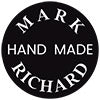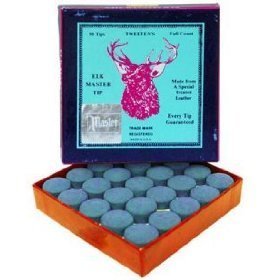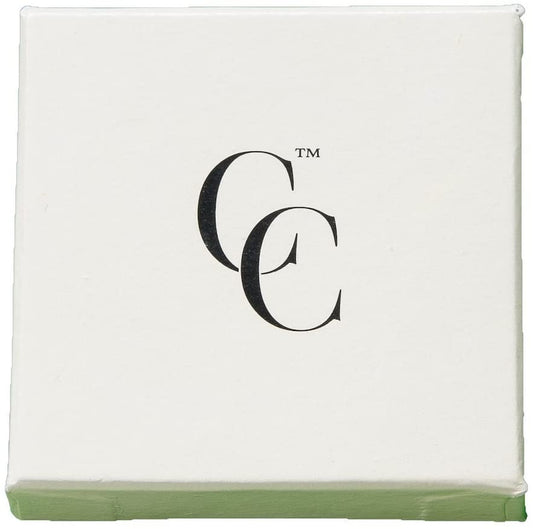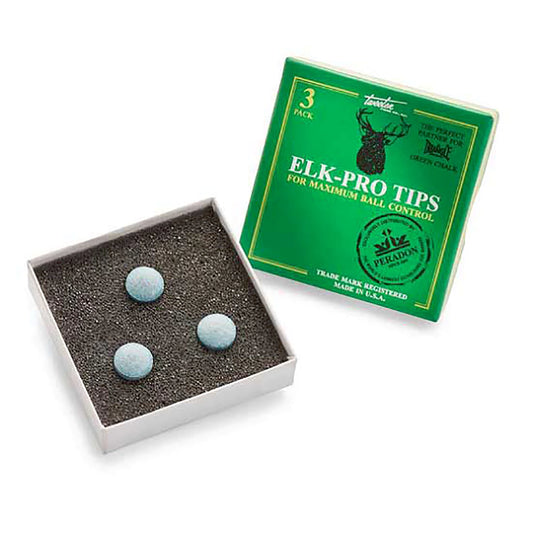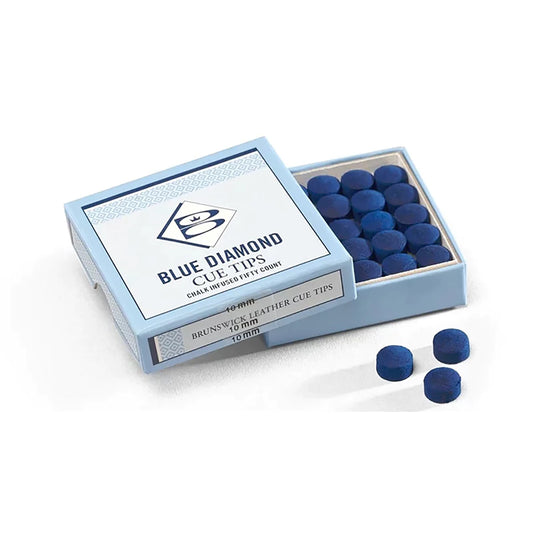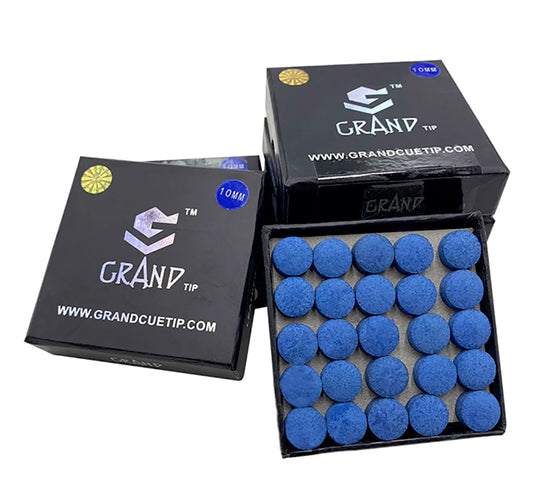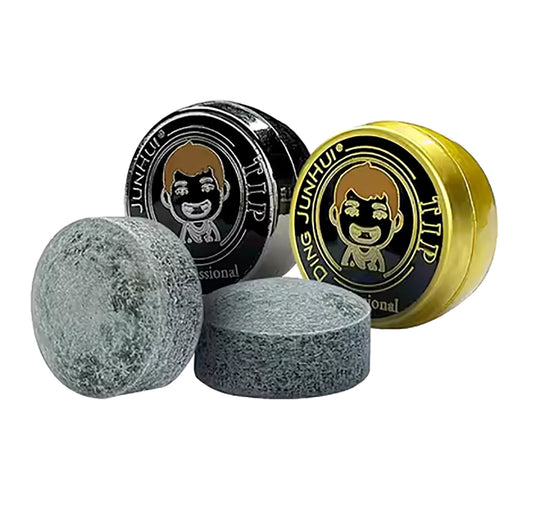-
ELK Master Tip UPGRADE for Snooker Cue & English Pool cue
Regular price £8.00 GBPRegular priceUnit price per -
Century Pro Cue Tip UPGRADE for MARK RICHARD Snooker Cue & English Pool cue
Regular price £15.00 GBPRegular priceUnit price per -
Peradon ELK-PRO Tip UPGRADE for Snooker Cue & English Pool cue
Regular price £15.00 GBPRegular priceUnit price per -
Brunswick Blue Diamond Cue Tip UPGRADE for Snooker Cue & English Pool cue
Regular price £7.00 GBPRegular priceUnit price per -
Grand Cue Tip UPGRADE for Snooker Cue & English Pool cue
Regular price £5.00 GBPRegular priceUnit price per -
Ding Junhui Second Generation Professional Cue Tip UPGRADE for Snooker Cue & English Pool cue
Regular price £20.00 GBPRegular priceUnit price per
CUE TIP SIZE GUIDE
English Snooker Cue Tips: 8.5mm - 9.5mm.
American Pool Cue Tips: 12.5mm - 13mm.
English Pool Cue Tips: 8mm - 9.5mm
Carom Cue Tips: 11mm - 12mm
Break Cue Tips: 13mm - 14mm
Choose Snooker Cue Tips:
For beginners, it is recommended to start with a cue tip size of around 9.5mm, which takes into account both accuracy and hitting tolerance, and is suitable for beginners to familiarize themselves with basic positioning and rotation.
For snooker enthusiasts with basic skills, the recommended cue tip size range is 9.0mm to 9.5mm. The smaller tip helps you hit the cue ball more accurately and achieve more detailed positioning and rotation.
For Advanced / Semi-professional players, they usually choose the appropriate cue tips size according to their cues and playing style, focusing on accuracy and feel rather than general comfort. Therefore, most of them choose 8.5mm - 9.2mm tips size.
Choose Pool Cue Tips
Just like choosing snooker pool cue tips, if you are a beginner, choose a larger size, which is easier to hit. If you are looking for some precise control and spin skills, smaller tips are more suitable. However, billiard cue tips are usually larger in size, ranging from 12.5mm to 13mm. For break cues, a stiffer and larger head (up to 14mm) is generally used to provide the most power because it does not need to consider spin.
CUE TIP HARDNESS
Soft Tips
Soft cue tips are designed to absorb more impact, creating longer contact with the cue ball. This makes it easier to apply spin, which is great for players who rely on finesse shots, such as draw, follow, or English. While soft tips offer high grip, they tend to absorb too much impact, sacrificing crisp feedback and shot clarity.
Mmedium Tips
Medium soft cue tips are the choice of most snooker players because they strike a good balance between tactile feedback and control. They offer good spin potential while providing a firmer hit than soft tips. Not only do precision-focused snooker players prefer medium tips, but so do most advanced 8-ball and 9-ball players.
Hard Tips
Hard cue tips are firm and deliver a sharp, solid hit. Because they have less contact time with the cue ball, they produce less spin but more power. These tips are especially popular for break cues or jump cues, where maximum energy transfer is needed.
Regarding the choice of hardness of cue tips, this is a very subjective choice, and only the one that suits your style is the best.
HOW TO RE-TIP YOUR CUE?
Remove Old Tip: Use a sharp blade to carefully cut off the old tip.
Sand the Ferrule: Smooth the surface flat using fine-grit sandpaper.
Prepare the New Tip: Lightly sand the back of the new tip for better adhesion.
Glue the Tip: Apply a small drop of tips glue, and press the tip onto the ferrule and hold firmly.
Clamp the Tip: Use a tip clamp or tight rubber bands. Let dry for 10–15 minutes minimum.
Trim and Shape: Trim excess leather with a blade or tip trimmer. Shape the tip into a dome (nickel/dime radius). Smooth edges and top with sandpaper.
Scuff: Roughen the tip slightly with a tip scuffer.
HOW TO PROTECT AND MAINTAIN CUE TIPS ?
Keep the Tip Clean
After each session, wipe the tip gently with a dry cloth to remove chalk dust and debris. Avoid using water or solvents — they can damage the leather.
Chalk Properly
Chalk the tip evenly with a quality chalk. Use a circular motion to reduce uneven wear. Avoid tapping the cue with chalk upside down — this can flatten the tip.
Shape the Tip
Use a tip shaper or scuffer to maintain a nickel or dime shape. This helps with better ball control. Don't let the tip become flat — it affects spin and accuracy.
Maintain Proper Texture
Use a tip pick or aerator to gently roughen the surface so it holds chalk better. Don’t overdo it — too much roughening can weaken the leather.
Check for Wear and Tear
Inspect your tip regularly. If it's worn down to 1mm or less, it’s time to replace it.
Protect When Not in Use
Use a cue tip protector or store your cue in a case to prevent tip damage. Keep cues in a stable environment — avoid extreme heat, cold, or humidity.
